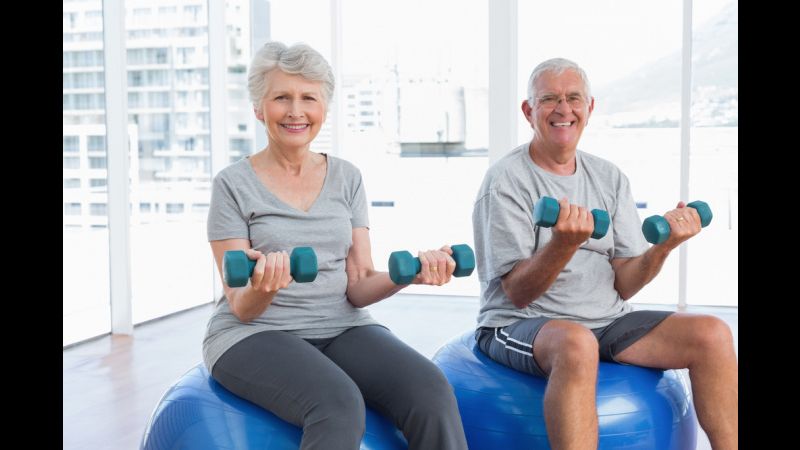Did you ever get the feeling that you might be shrinking? Your shoulders aren’t as wide as they once were. Last time you checked, that jacket was just a little tighter around the arms. You aren’t filling out that full-length mirror the way you used to. Well it may not just be your imagination. If you’re over the age of fifty, there’s a good chance that you may actually be losing muscle. The phenomenon, known as sarcopenia, can begin as early as 20 years of age but will tend to gather in speed and intensity as we mature. At a certain juncture, the pace at which you lose muscle begins to eclipse the pace at which you gain it. As a result, according to an article in The Huffington Post, seniors are at risk of losing up to .4 pounds of muscle every year. To a certain extent, this process is simply a natural part of aging. The challenge of maintaining muscle mass and function is one that everybody must face. Even professional athletes experience a gradual decline in ability for this very reason. But as most athletes will tell you, staying in shape as you age is all about adjustment and conditioning. As your body changes, so must the steps that you take to keep yourself fit. No matter who you are, there are lifestyle changes you can make that won’t just help you combat muscle loss but which can also improve your quality of life on the whole:
Diet What you eat is critical throughout your entire life. A nutritionally balanced diet will have a strong impact on your future health. This is especially true as you age and your metabolism slows. Nutritionists recommend a modest but steady intake of protein in order to promote muscle growth and repair. According to the U.S. News & World Report, seniors should aim for an intake of roughly 4 ounces of good protein per day. Common sources for this kind of protein include fish, chicken, beef, dairy products or rice and beans. It also bears noting that an unhealthy diet filled with saturated fats and highly processed junk foods may lead to obesity and related conditions. Obesity can stand in the way of other important steps that you should take to avoid muscle loss, such as…
Exercise Research on the subject of muscle loss tells us that exercise is the single most important defense that we have against shrinking. Doctors recommend a balance between regular strength or resistance training and steady aerobic exercise. This means that the healthy adult will find the time both for a daily 30 minute aerobic session and a few weight lifting sessions a week. For the former, a brisk walk will do. For the latter, your best bet is to find the level and intensity of strength training that works for you. The harder you work at it, the better you are likely to do not just at preventing muscle loss but at sustaining growth. In fact, a study published by WebMD indicates that adults over the age of 60 must exercise harder and more frequently than their younger counterparts in order to achieve the same level of muscle growth. This is recommended with one cautionary note. Both weight-training and aerobic activity should be pursued within the scope of your own limitations. Don’t overdo it. Regular exercise is essential but over-exertion may do more harm than good. Find your comfort level and stick to it. And while we’re on the subject of avoiding over-exertion…
Sleep Make sure that you get the most out of your workouts. In order to capitalize on the muscle development that you’ve worked so hard to achieve during your strength training, you have to give your body time to rest and recover. Believe it or not, your body is getting a lot done even while you’re snoozing away. When your body is sleep deprived, it becomes much less efficient at building or repairing muscles. Get plenty of rest and your muscles will thank you by sticking around longer. The offshoot of adopting these lifestyle adjustments is that, in addition to staving off muscle loss, you’ll feel a whole lot better too.

